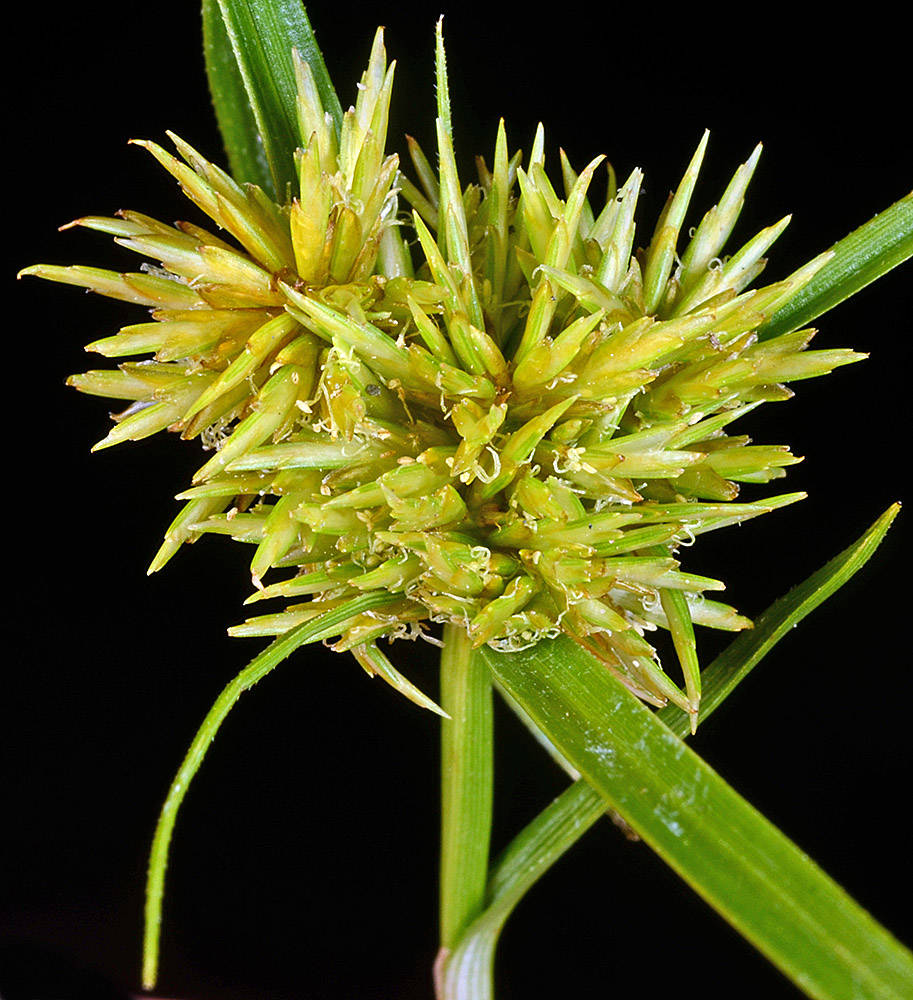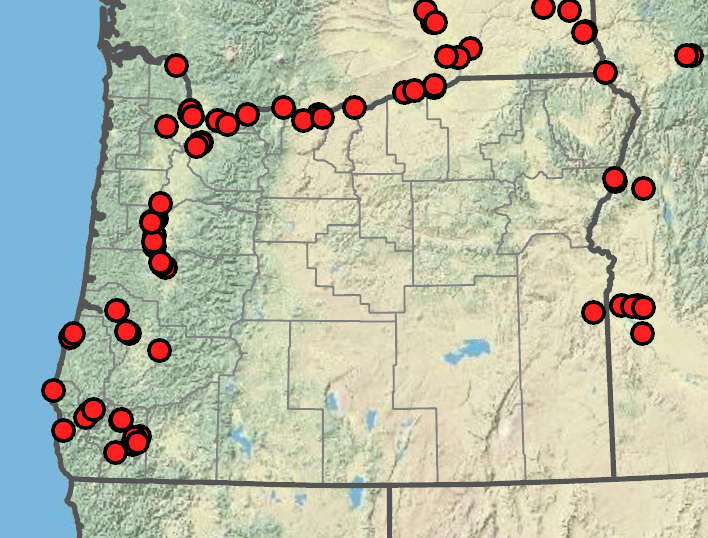Cyperus hermaphroditus
Cyperus strigosus
false nutsedge
basally swollen and corm-like, trigonous; (1)20–40(90) cm × 1–6 mm.
(10)20–40 cm × 1–4(8) mm.
clusters loosely cylindric, 1–4; (6)10–28(50) × 10–40 mm;
rays (0)3–6(8), 0.5–7(25) cm;
inflorescence bracts ascending at 30–45°.
(5)12–50, linear-lanceoloid, compressed, 5–30 × 0.6–0.9 mm;
rachilla more or less deciduous;
wings 0.4–0.5 mm wide; floral scales more or less deciduous, 3–11, appressed, oblong-obovate, 3.2–4.5(6) × 1–1.8 mm, stramineous to pale brown with green mid-stripe;
lateral ribs 3–4; medial ribs (1)3;
apex more or less acute, overlapping lower 25–50% of next scale.
anthers 0.3–0.5 mm;
styles 1–2 mm;
stigmas 3–4 mm.
more or less stipitate, narrowly oblong; (1.5)1.8–2.4 × 0.5–0.6 mm.
Cyperus hermaphroditus
Cyperus strigosus
Lake shores and river margins exposed as water level falls, ditches, other disturbed wet soils, sometimes a weed in croplands. 0–600 m. BW, Col, CR, Sisk, WV. CA, ID, NV, WA; north to Saskatchewan, east to ME and FL. Native.
Cyperus strigosus is common in Oregon. Individuals that flower the first year are easily confused with C. erythrorhizos, C. esculentus, and C. odoratus. Cyperus erythrorhizos has shorter floral scales; C. esculentus has persistent floral scales; C. odoratus has subcylindric spikes.
Barbara Wilson, Richard Brainerd, Nick Otting
- Local floras:
BC,
CA,
OR,
WA
- Local Web sites:
CalFlora,
CalPhotos,
Flora NW,
PNW Herbaria
WildflowerSearch
iNaturalist (observations)
USDA Plants Database
- LBJ Wildflower Center
- SEINet
- Plants of the World Online
- Encyclopedia of Life
- Wikipedia
- Google Image Search



